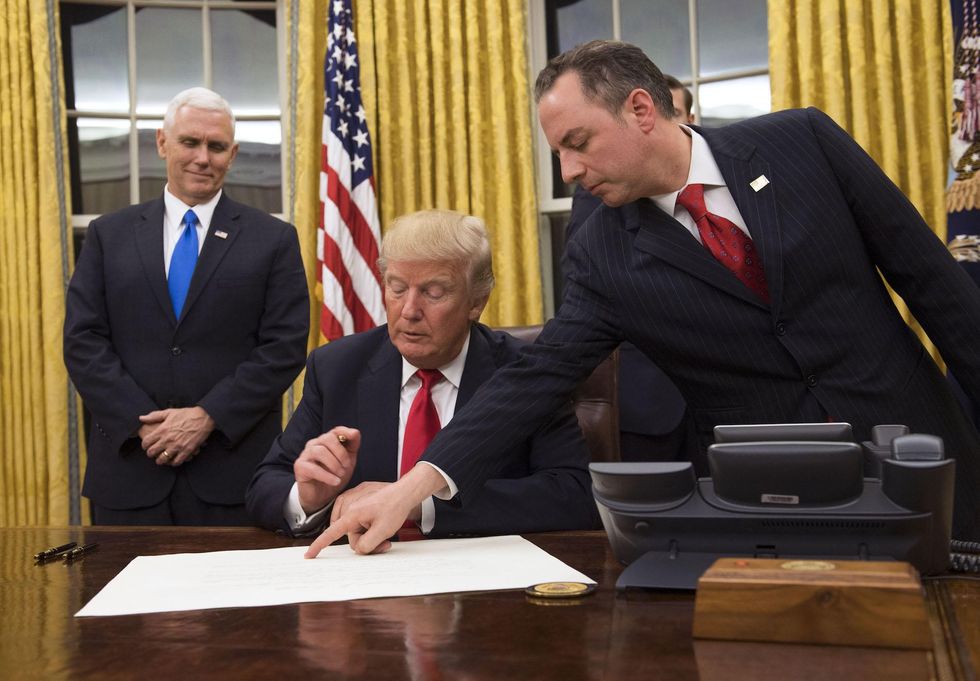
WASHINGTON, DC - JANUARY 20: President Donald Trump prepares to sign a confirmation for Defense Secretary James Mattis as his Chief of Staff Reince Priebus (L) points to the order while Vice President Mike Pence watches January 20, 2017 in Washington, DC. (Photo by Kevin Dietsch - Pool/Getty Images)